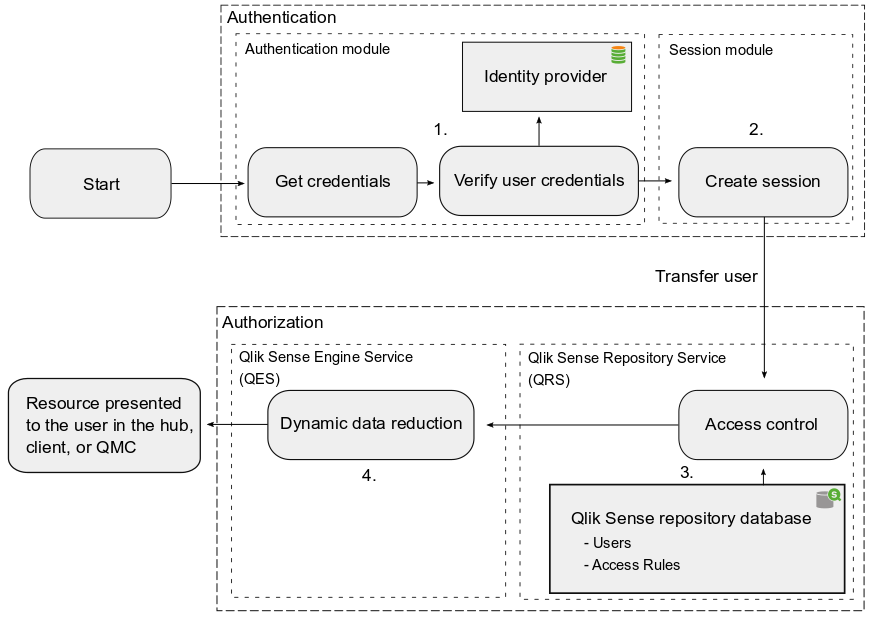Security example: Opening an app
The figure below shows the flow in the Qlik Sense security system when a user logs in and opens an app.

- Authentication: The authentication module in the Qlik Sense Proxy Service (QPS) handles the authentication. The credentials provided by the user are verified against information from the identity provider (for example, a directory service such as Microsoft Active Directory).
- Session creation: When the user credentials have been successfully verified by the authentication module, a session is created for the user by the session module in the QPS.
- Access control system: When the user tries to open an app, the Qlik Sense Engine Service (QES) requests the Qlik Sense Repository Service (QRS) to check if the user is authorized to perform the action. The QRS then checks the repository database, where, among other things, all users and access rules are stored.
- Dynamic data reduction: When the user has been successfully authorized by the QRS, the app is opened. Before the data is displayed to the user, the QES performs a dynamic data reduction, where the data that the user is allowed to see is prepared.
Information noteA user is imported into the repository database from a User Directory (UD) (for example, Microsoft Active Directory) using Qlik Sense User Directory Connectors (UDCs). The import is triggered by the Qlik Sense Scheduler Service (QSS) and the intervals in-between imports can be scheduled. See: Managing users.
